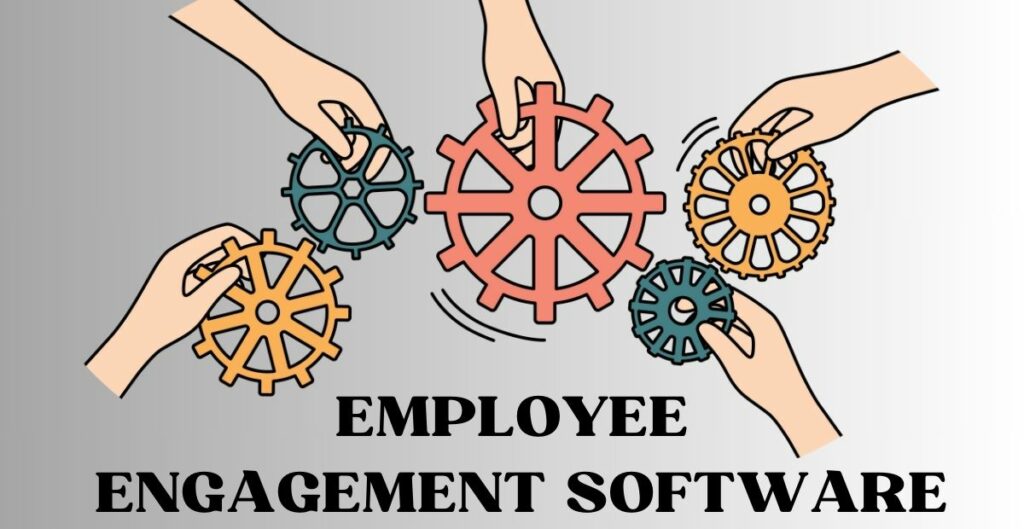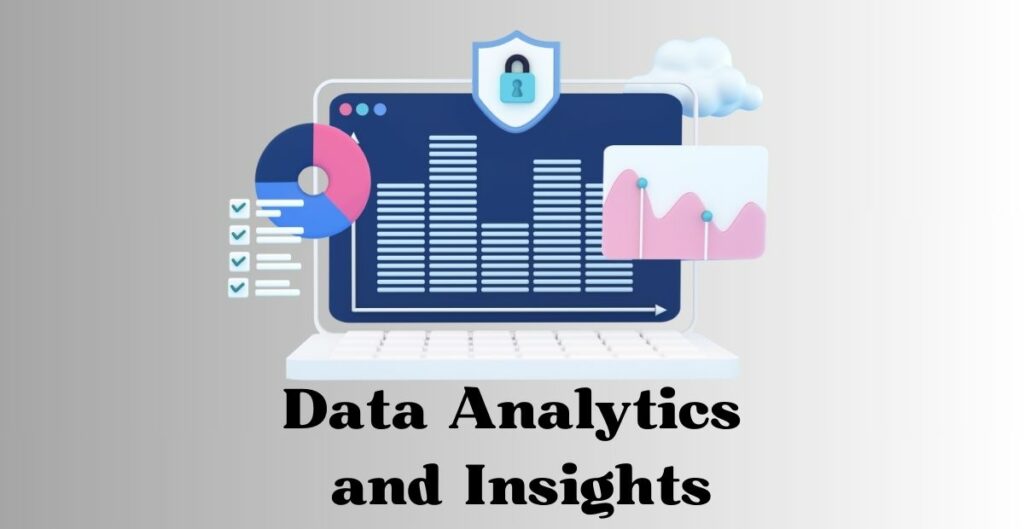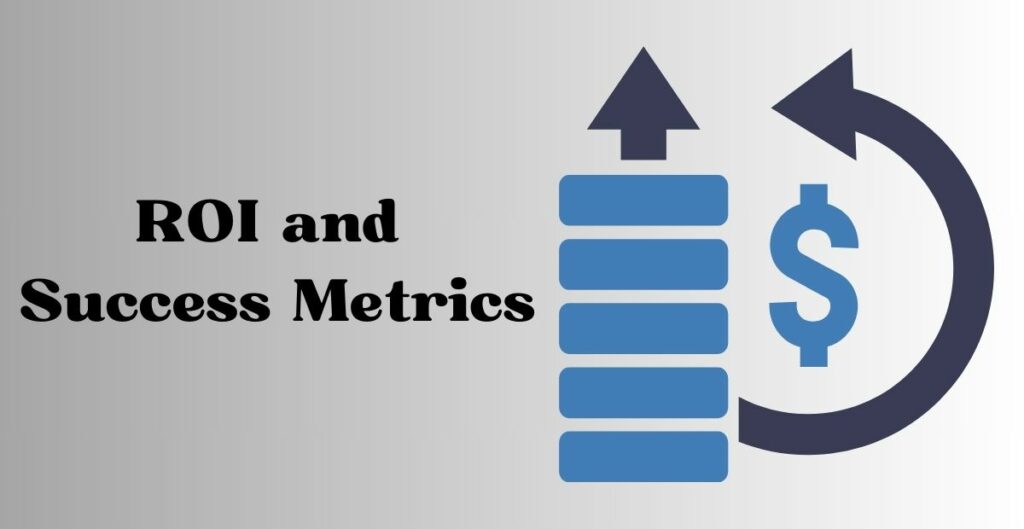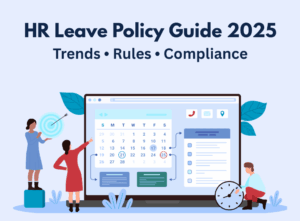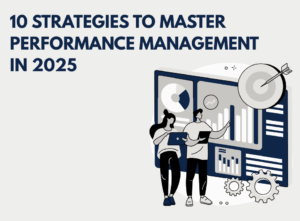What Is Employee Engagement Software?
Employee engagement software may be a digital cornerstone for the formation of a successful working atmosphere that contributes to the well-being of the workplace. The whole aggregate of digital strategies serves as a dynamic interface for scanning, nurturing, and boosting employee engagement and job satisfaction rates.
However, this is much more than just a tool that divides the workers’ building into different components—it is so much more than that. It is a very robust software tailored to unwind the employee perception, motivation, and understanding. The multilevel set of options such as the detailed survey of staff members, casual feedback sessions, or the 360-degree view of the organizations’ mood presents a bird’s eye overview of the workforce mindset.
It is one of the most crucial features of performance analytics, delving into minute summaries of employees’ performance parameters, detecting trends, and revealing potential areas of improvement. Furthermore, built into the software systems, these recognition programs stand out as strong tools for the promotion of admiration-centred as an okay way to enforce appreciation and recognition while maintaining positive attitudes.
Communication channels that have been incorporated into the software allow fluid communication with multiple people management and employees with a dialogue in which each one can express directly, which is free and fosters trust and engagement. This part is more significant in distributed or virtually connected workplaces, thus mending connectivity and cohesion is a necessity.
The starting sentence could sound like this: ” The use of data-driven strategies by organizations goes ahead towards the realization of software that captures the key elements that influence employee engagement levels.” The actionable intelligence given to management teams, helps them to create unique programs and initiatives, which are formulated in a way to target specific issues and challenges that are affecting the employees. So basically, it aims to generate an environment that is supportive and empowering.
Now, Employee engagement software is not confined to the purpose of just the job but it has the aim to enlighten the experience reached by human beings in the workplace. Through the establishment of technology to empower, still, companies with a goal are still patrolling a path to never-ending growth in setting up the working environment that nicknames every employee as a treasure, who is entitled and stimulated to go the extra mile by producing their very best.
Importance of Employee Engagement Software in HRMS and Payroll
- Retention and Productivity: Employees engaged will tend to remain faithful to their employment and places of employment while performing at their best. Employee engagement software initiatives’ investing cost can be a little bit high but it is paid off with the reduction of turnover rates, the employees’ productivity, and the business’ prosperity.
- Talent Attraction: Organizations that have developed the reputation of having a workforce that is highly involved are likely to be perceived as great places to work by future high-calibre employees. Employee well-being becomes a major determinant when individuals choose a particular company. This is because the workers are usually drawn to those companies that have the best employee well-being and offer chances for the growth and development of the workers.
- Performance Management: employee engagement software gives managers a good idea of their employees’ performance by data collection, from the level of individuals to the level of a team. Managers can identify high performers, recognize their contributions, and provide the necessary assistance to those lessirommarsch.com hard workers.
- Culture and Morale: An engaged culture can uplift the employees, by making them feel accepted and included in the collective. Such an environment enables one to achieve better job satisfaction, greater morale as well and a higher level of happiness at their place of work.
- Alignment with Organizational Goals: Only engaged employees can better know, as well as admit, the mission, vision, and values of the organization. They are self-driven to do the tasks for collective objectives and help every department to turn out positive results for the business.
Features and BenefitsEmployee Engagement Software
Enhancing Communication: How Employee Engagement Software Boosts HRMS Efficiency
- Centralized Communication Hub: Let’s think of the software for employee engagement software that provides a convenient means for communication, and employees can access actual news, company updates, and HR policies in real time. It familiarizes the option of using a central communication platform that negates the need for people to always use random means of communication as this would ensure that everyone is in the know and connected.
- Feedback Mechanisms: Communication is not only giving out information but ensuring that the messages are also well-received by the audience. Such software facilitates the gathering of information through surveys, opinion polls, and suggestions, giving employees the chance to express their opinions, add any issue that may be on their minds, and make suggestions. The working of this feedback loop builds on transparency, trust, and the evolving need of a company to be one step ahead of the competition.
- Instant Messaging and Collaboration Tools: User feedback shows promise of a more favourable online shopping experience, and this is the main reason firms offer features like instant messaging, team communication slices, and virtual meeting rooms. These tools help to do effective and fast communication among the teammates within a minute no matter if they are in a different time zone or on the opposite side of the earth. This enables the team members to collaborate even when having different time zones or geography which leads to the crew’s partnership.
Driving Performance: Leveraging Engagement Tools in Payroll Systems
- Performance Metrics Integration: Employee engagement software that can integrate into a performance management system can be used to track employees’ work output and dynamic assessment of employees as well as the various metrics relevant to payroll, like productivity scores, absenteeism records, and performance ratings. Organizations get the advantage of calculating accurate figures at the end of paydays, annual appraisals, skill-based compensations, and so on.
- Recognition and Rewards Programs: Encouraging the employees’ initiated ideas, the recognition for their work, and their achievement and contribution is the most valued key to keeping employee engagement and motivation. Mobile employee engagement software represents a handy solution and has the benefit of automatically launching recognition programs, further simplifying the process of acknowledging and rewarding employees for their success in the completion of given tasks or for outstanding performance.
- Goal Setting and Progress Tracking: Ensure goals and objectives are defined, so that the staff can follow them. Using employee engagement software employees can track their progress against the SMART (Specific, Measurable, Achievable, Relevant, Time-bound) goals set, and receive polite feedback from managers and peers. This helps to create clarity of goals, transparency of the process used, and continuous improvement.
Integration and Compatibility
Seamless Integration: Aligning Employee Engagement Software with HRIS Platforms
- API Compatibility: It is important that the identified software giving the employees engagement software capability would have powerful Application Programming Interfaces (APIs) for integration with the existing HR platforms. APIs provide the data exchange to and communication within different software systems where information can be sent and received in a unified manner, calling the need for the manual input or replication of data.
- Data Synchronization: First, set up a bidirectional data communication system between the Employee Engagement Software and the HRMS platform. This simplifies the process of making the employee information from one system like, personal information, role and position, and organizational structure consistent and up to date among the entire systems as well.
- Customization Options: Pay attention to employee engagement software that allows for different ways of tailoring the software to the needs of the HRMS system in your organization, including adaptation for your requirements. Personalized form objects, workflows, and data mappings are features that let organizations shape the integration to their context and work scenarios.
- User Authentication and Access Control: Support SSO, or Oauth to make record retention, avoid errors and inconsistencies, and to have multiple integrations during the login process. Furthermore, administrators must use access controls and permissions to effectively regulate the user’s privileges and data visibility, according to the role-based permission system.
Compatibility Check: Ensuring Smooth Operation with Payroll Systems
- Data Interoperability: Check to make sure that the employee engagement software conforms with data interoperability standards, such as CSV, XML, or JSON, that can be imported for your payroll system. It guarantees data transmission proceeds unhindered and allows for the fusion and matching of the data in terms of format and content.
- Payroll Data Mapping: Provide clear data mapping policies and make mappings between the employee engagement software and payroll system to ensure that suitable employee information, such as number of worked hours, vacation number, and bonus, are copied from one system to another accurately. Map fields and formats to avoid errors and inconsistencies while changing data file format.
- Compliance and Regulatory Requirements: Make certain that the employee engagement software and payroll system that are used abide by any regulatory requirements that apply to the company, and these include such as tax regulations, labour laws, and data privacy regulations. Ensure that payroll and deductions systems can handle complex calculations, reporting obligations, and specific requirements (from a regulator’s point of view.)
- Real-time Integration: The optimal solution is the synchronization of employee engagement software and payroll system in real-time period or near real-time mode, which would enable the sale of up-to-date and positive data. Integration regarding real-time prevents delays in cases of payroll processing, saves manual information, and helps in general efficiency improvement.
Data Analytics and Insights
Unlocking Insights: Analyzing Engagement Data in HRMS Software
Analyzing engagement data through Human Resources Management software could prove to be invaluable information and thus could give a resolution to the overall health and happiness of the workers. Here’s how organizations can unlock insights from engagement data:
- Surveys and Feedback Analysis: Draft built-in questionnaire software over HRMS software to get feedback from employees on the areas that matter including job satisfaction, organizational culture, and work-life balance. Assess the survey results by highlighting trends, features, and areas that need to be reviewed.
- Employee Sentiment Analysis: With the help of the sentiment analysis helps you to evaluate the perception regarding the employee feedback received through the surveys, performance evaluation, and any other communication channel. Analyze sentiment along the specificities of time to come up with changes/ trends in employee morale and engagement levels during that time.
- Performance Metrics Correlation: Cross-link engagement measures with core business outcomes metrics, such as productivity, turnover rates, and absenteeism. Highlight the key connections that explore a connection between levels of employee engagement software and performance output to know the effect of engagement level on organizational effectiveness.
- Segmentation and Benchmarking: Examine segment engagement data (e.g. according to demographic characteristics such as age, sex, etc., job positions, departments, or tenure), comparing them to identify specific groups of people whose engagement boosts or decreases for various reasons. Set benchmarking engagement KPIs against industry standards or internal benchmarks, to evaluate the responsiveness compared to competitors.
Optimizing Payroll Decisions: Using Engagement Metrics for Better Compensation Strategies
Engagement metrics can be effectively implemented while creating powerful methods to increase positive impact in payroll strategies. Here’s how organizations can optimize payroll decisions using engagement data:
- Performance-Based Compensation: Integrate engagement metrics including employee surveys, peer recognition, and employee professional development participation levels into the paymaking decision factors, such as bonus and wage adjustments. Recognize the employees who show active participation in a positive workplace environment and engage them directly in work-related initiatives.
- Retention Incentives: Identify at-risk employees based on the engagement metrics–low engagement scores, low satisfaction scores, etc. Launch of specific retention plans for segments: bonuses, professional development opportunities, flexible work arrangements, allowing one to keep leading personnel and reduce the level of employee turnover.
- Merit Increases and Promotions: The employee engagement software data must measure an employee’s preparedness for advancement and promotion roles to enhance his/her performance. Those are the staffers who always manifest their engagement, leadership potential, and value conformity to the company goals at the higher level and are the ideal picks for the pay rise and advancement.
- Total Rewards Optimization: Be able to view total rewards management from a more comprehensive perspective by utilizing neither monetary nor non-monetary types of incentives. Additionally, well-paying salaries and benefits should be granted to employees and motivate employees for their contributions, achievements, and impact on organizational culture and engagement. Therefore, employees should be regarded and rewarded rightly in each situation.
Employee Experience and Satisfaction
Improving User Experience: Enhancing Employee Interaction with HRMS and Payroll
To follow the best course of action when it comes to enhancing the UX of employees while dealing with HR management systems (HRMS) and payroll platforms, it is paramount to check for efficiency, engagement, and satisfaction. Here’s how organizations can improve user experience:
- Intuitive Interface Design: Invest in the self-mastering Interface Design for HRMS and payroll interfaces with natural navigation, convenient arrangements, and engaging elements. Make tedious activities such as time tracking, leave requests, and expense paper trails short and hassle-free to facilitate users and hasten work proceedings.
- Mobile Accessibility: Create the possibility for personnel to be connected to HRMS and payroll platforms via mobile devices for the sake of providing them with essential HR functions and payroll information prerequisites at any place at any time. Build design rules incorporating the functions of responsiveness to provide a flexible display, regardless of the screen size and device.
- Self-Service Capabilities: Equip employees with self-help instrumentality through which they can control their data, turn in their leave requests, view their payrolls, and change their tax withholding choices without barriers of HR or Payroll administrators. Residents depend on the self-service functionalities to save time, increase accuracy, and assert employee independence.
- Personalization Options: Give customization capabilities to HRMS and payroll employees so that they can alter their experiences in the formats that are comfortable for them and by their work needs. Give providers the option of determining notification preferences, dashboard widgets customization, as well as choice of language and localization of the interface to increase usability.
- Training and Support Resources: Provide the workers with training, manuals, tutorials, and support platforms where they can solve HRMS and payroll issues. Organize follow-up workshops, user manuals, and Frequently Asked Questions (FAQ) materials that aim to address the issues of concern and give instructions to consumers so that they can benefit from the functionalities provided.
Fostering Satisfaction: How Employee Engagement Software Increases Employee Happiness
Employee engagement software systems are a very critical tool in employers’ toolkits because by employing these systems, employers achieve meaningful interactions, recognition, and feedback with their employees. Here’s how employee engagement software contributes to employee happiness:
- Recognition and Appreciation: Employer engagement software is the platform that will allow managers and peers to express their gratitude for employees’ inputs, accomplishments, and transformation steps. Recognition is the driver of morale in the office, it increases the feeling of being valued and at the same time, it reinforces good relationships among teammates and responsibilities.
- Feedback and Communication: Employee Engagement software offers an avenue for a head-to-head dialogue between employees and leaders that enables people to post their insights, ideas, and worries. Fluent channels of communication are instrumental in the building of mutual trust, help collaboration on projects, and employee voice in the expression of their views.
- Opportunities for Growth: Engage employees by offering options for meaningful skill improvement, professional advancement, and individual development through training courses, mentorship schemes, and career growth toolkits. Being concerned with the professional growth of the employees and their advancement in their careers enables the employer to create a favourable tendency on the side of the employee and therefore raise the rate of satisfaction with their current job.
- Work-Life Balance Support: Employee engagement software solutions may comprise some systems that support the employee to work remotely, flexible scheduling, and wellness programs for wellness and work-life balance. Balancing the work-life ratio raises job satisfaction, and stress resistance, and improves mood too.
- Community and Connection: Engage a feeling of community and connectedness of the employees through the software activities by offering virtual events, team building activities, and social recognition initiatives. Possessing a cult of common interest and likeminded among employees takes accountability, contentment, and loyalty to the company.
ROI and Success Metrics
ROI shows the net profit or loss over time which usually depends on the initial costs. This is a ratio of net profit and it is calculated by the equation of the net profit (NP) divided by the initial investment cost and once this value is covered by 100%. Success metrics are key performance indicators that have specific targets to measure whether a given objective and goal have met their desired results or not. They contain both qualitative and quantitative factors indicating profitability drivers, namely the actual ones like cost-cutting, efficiency enhancement, and customer satisfaction. In combination, two tools, return on investment (ROI) and a scorecard of success numbers, give us a full measurement of how the investments or initiatives performed in the organization.
Measuring Success: Key Metrics for Assessing ROI in HRMS and Payroll
Checking ROI from HRMS and payroll through accounting for all the key metrics that demonstrate improvements in major business outcomes such as productivity, efficiency, and cost-effectiveness. Here are key metrics for measuring success:
- Time Savings: Estimate how many man-hours are saved in a month by HR and payroll staff in basic administrative jobs like data entry, bill processing, maintaining employee data, and report creation. Compare the administrator time consumed by hand tasks on a daily routine before and after implementing HRMS and payroll systems.
- Error Reduction: Monitor the diminishing amount of errors and concordances in payroll processing, the calculation of tax payments, the benefits administration, and the compliance documentation. Track the decrease in load of payroll errors and auditing findings to obtain enough evidence on the reliability, correctness, and functionality of the systems.
- Compliance Adherence: Carry out regular checks on the corporation’s compliance with labour laws, tax regulations, and industry standards. This involves watching for meeting deadlines, submissions of reports, and regulatory changes. Measure the mitigation of increased compliance risks and penalties associated with breaches.
- User Satisfaction: Evaluate the HRMS and payroll systems’ efficiency through administration specialists, payroll officers, managers, and staff feedback. Carry out surveys, interviews, and focus groups to collect the user’s thoughts on operation, expressibility, and satisfaction with systems as well.
- Return on Investment (ROI): Calculate the ROI of the HRMS and payroll systems attributing the benefits that are realized from the systems(incognito of the time occupied, cost reduction, productivity improvement) to the total investment made in installing and maintaining the systems. Use % as a measure expressing ROI to represent the efficiency between the expense and income.
- Productivity Improvement: Analyze the augmentation in HR and payroll productivity by measuring metrics like the number of transactions per hour processed, time to hire, time to onboard, and processing times for payroll. Calculate productivity and throughput gains results of automation and optimization processes.
